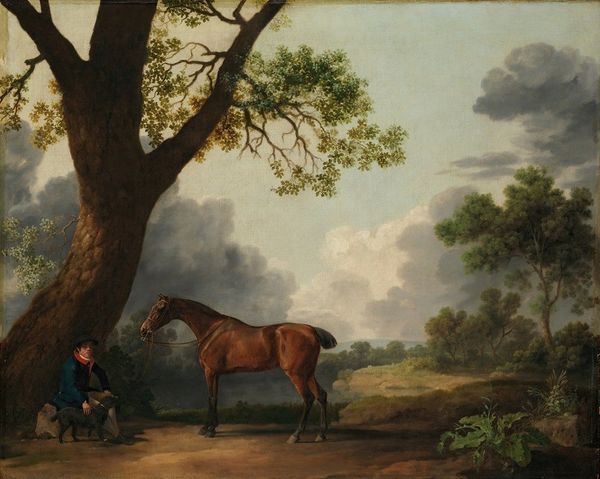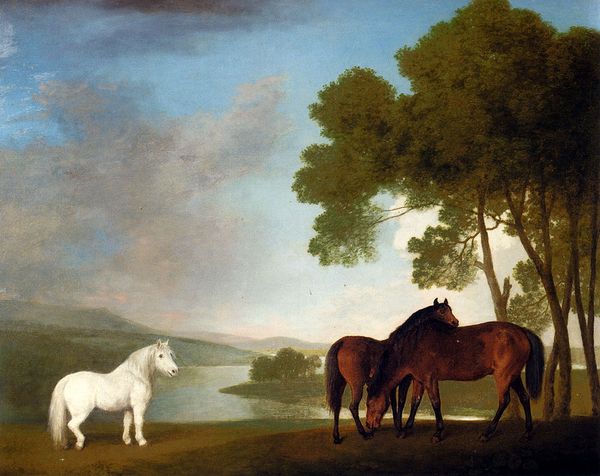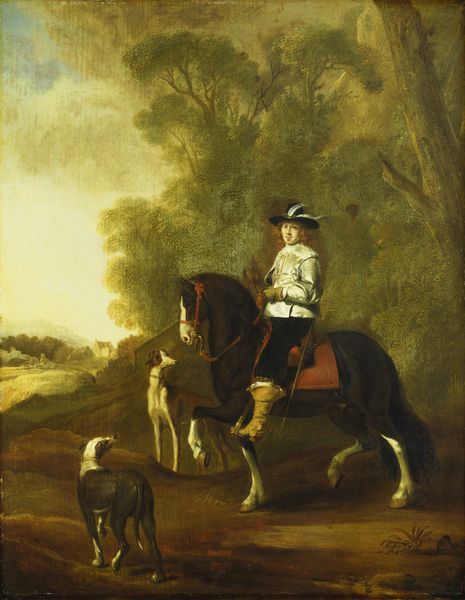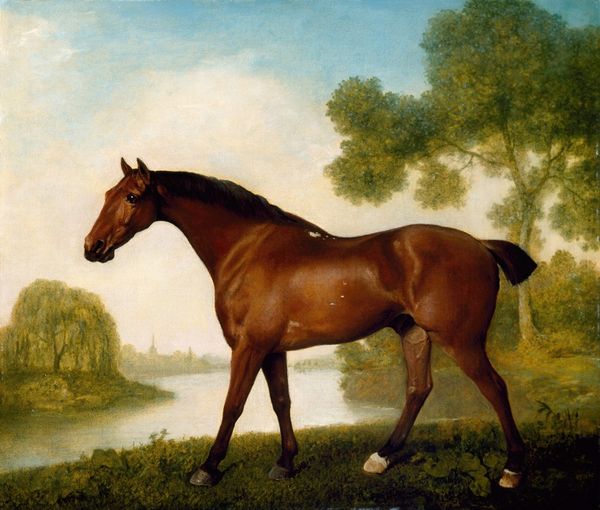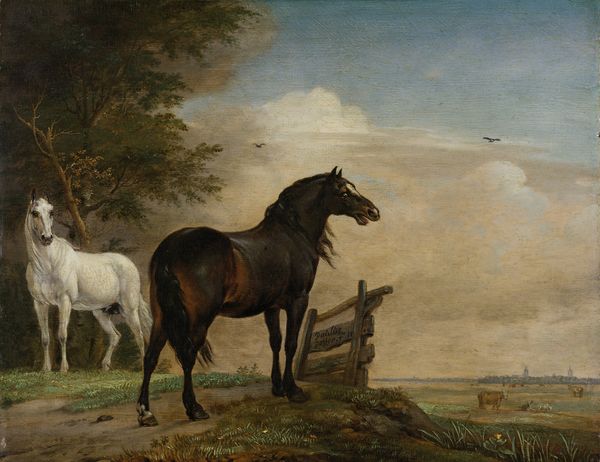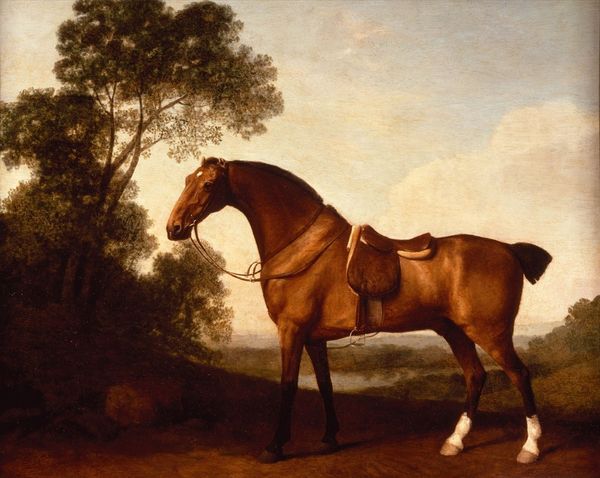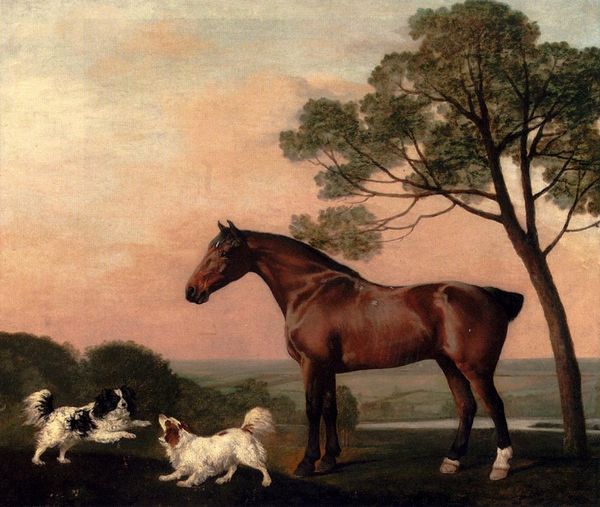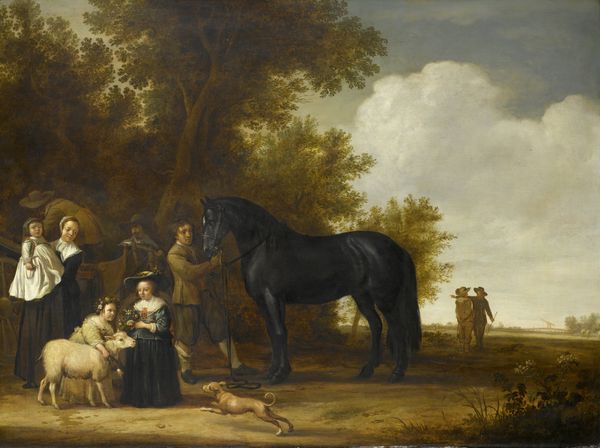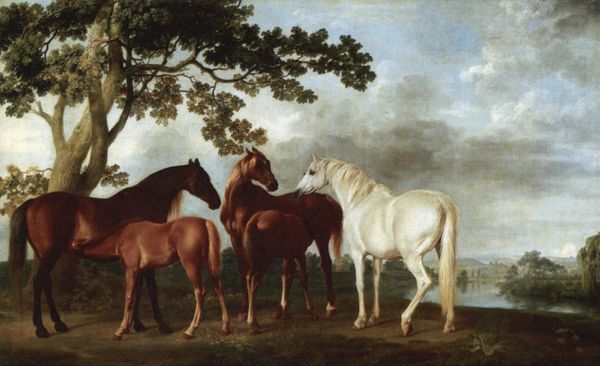
Copyright: Public Domain: Artvee
George Stubbs, around the late 18th century, created this oil on canvas painting featuring a horse and stable lad in an open, pastoral setting. The scene is dominated by the horse in the foreground, its sleek form rendered with careful attention to musculature and coat texture. The soft, muted tones of the landscape create a placid atmosphere, yet there's a subtle tension in the positioning of the figures. Stubbs' meticulous rendering of animal anatomy aligns with the Enlightenment's emphasis on empirical observation. But, the stable lad's presence introduces an element of social hierarchy, positioning the horse as a symbol of status and wealth. The composition, with its balanced arrangement of figures and landscape, invites contemplation on the relationships between nature, society, and representation. Notice the horse's graceful neck and the lad's poised stance. These formal elements contribute to a sense of idealized harmony. Stubbs’s work can be interpreted through a lens of semiotics, where the horse signifies power and the landscape embodies the cultivated ideal of the English countryside. This work destabilizes simplistic readings of nature, inviting us to consider how artistic representation shapes our understanding of the world around us.
Comments
No comments
Be the first to comment and join the conversation on the ultimate creative platform.
